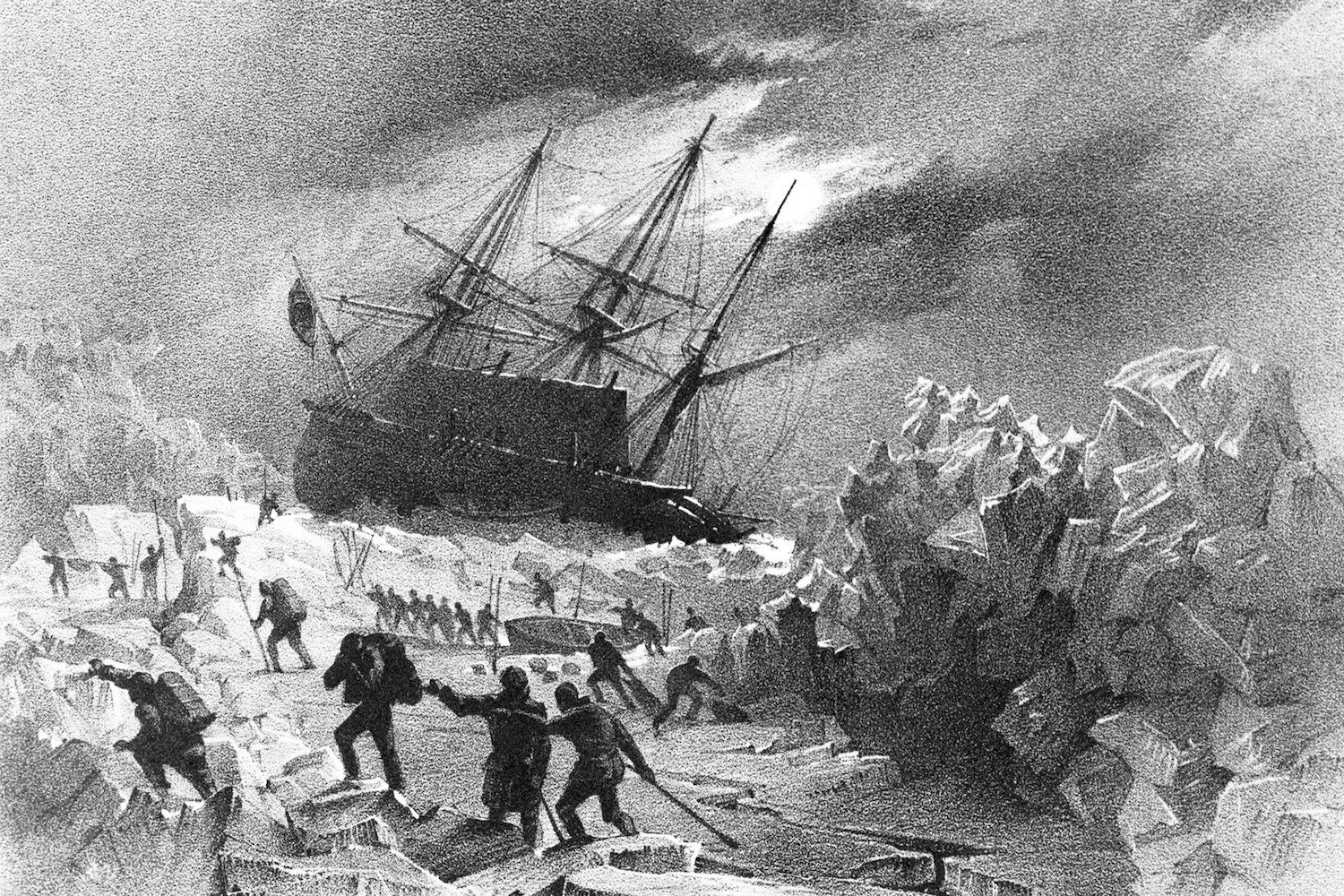
On May 19, 1845, two ships set sail from Kent, England. The crew and officers of the HMS Erebus and HMS Terror, under the command of Sir John Franklin, were to carry out a mapping mission of the Canadian Arctic’s Northwest Passage. The trip, to put it mildly, would not go well.
Before they reached their destination, five crew members left the ship due to sickness. They would be the lucky ones, as both ships would end up trapped in Arctic ice. While some died before abandoning the ship, 105 of them eventually left the vessels behind and set out to find help overland. In total, 129 sailors lost their lives.
Recollections from Inuit who saw the sailors, and marks discovered on some of the remains, tell a grisly tale, in which those who lived the longest were forced to eat the remains of the dead. Now, almost 180 years after the expedition began, the remains of one of those unfortunate men subjected to posthumous cannibalism has been identified as belonging to James Fitzjames, captain of the Erebus.
Researchers have found human bones and teeth on several trips to King William Island, dating back to the mid-19th century. That’s where over 100 survivors of the ill fated voyage had fled after abandoning their stuck ships, and ultimately, where they died. At one location, 451 bones, belonging to at least 13 sailors, were found. Who those bones belonged to remained a mystery, until anthropologists and DNA experts at Canada’s University of Waterloo and Lakehead University began analyzing them several years ago. They published some of their findings in a recent edition of the Journal of Archaeological Science: Reports. After examining 17 bone and tooth samples, collected from one of the King William Island camps, the DNA was compared to samples taken from living relatives of some of the doomed sailors.
“We worked with a good quality sample that allowed us to generate a Y-chromosome profile, and we were lucky enough to obtain a match,” said Stephen Fratpietro of Lakehead University’s Paleo-DNA lab.
Fitzjames was a senior member of the expedition. In fact, he was the one who wrote the report declaring Franklin’s death. His rank didn’t prevent his remains from being used for survival; cut marks on his jaw bone indicate some of those still living had at least tried to eat him.

“This shows that he predeceased at least some of the other sailors who perished, and that neither rank nor status was the governing principle in the final desperate days of the expedition as they strove to save themselves,” said Douglas Stenton, an adjunct professor of anthropology at Waterloo, in a statement.
Fitzjames is only the second member of the expedition whose remains have been identified. In 2021, some of the same scientists used a similar technique to determine some tooth and bone had once belonged to John Gregory, a warrant officer who served on the Erebus. Scientists rediscovered the Erebus in 2014, while the Terror was found in 2016.
The archaeologists aren’t done. They’ve asked other distant family members of sailors who were on the Franklin expedition to contact them, hoping they, too, will generate matches that allow more remains to be identified.
Trending Products




